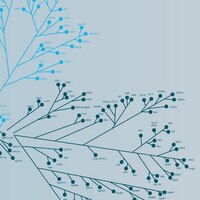The antihyperglycemic drug alpha-lipoic acid stimulates glucose uptake via both GLUT4 translocation and GLUT4 activation: potential role of p38 mitogen-activated protein kinase in GLUT4 activation.
Konrad, D, et al.
Diabetes, 50: 1464-71 (2001)
2001
Show Abstract
The cofactor of mitochondrial dehydrogenase complexes and potent antioxidant alpha-lipoic acid has been shown to lower blood glucose in diabetic animals. alpha-Lipoic acid enhances glucose uptake and GLUT1 and GLUT4 translocation in 3T3-L1 adipocytes and L6 myotubes, mimicking insulin action. In both cell types, insulin-stimulated glucose uptake is reduced by inhibitors of p38 mitogen-activated protein kinase (MAPK). Here we explore the effect of alpha-lipoic acid on p38 MAPK, phosphatidylinositol (PI) 3-kinase, and Akt1 in L6 myotubes. alpha-Lipoic acid (2.5 mmol/l) increased PI 3-kinase activity (31-fold) and Akt1 (4.9-fold). Both activities were inhibited by 100 nmol/l wortmannin. alpha-Lipoic acid also stimulated p38 MAPK phosphorylation by twofold within 10 min. The phosphorylation persisted for at least 30 min. Like insulin, alpha-lipoic acid increased the kinase activity of the alpha (2.8-fold) and beta (2.1-fold) isoforms of p38 MAPK, measured by an in vitro kinase assay. Treating cells with 10 micromol/l of the p38 MAPK inhibitors SB202190 or SB203580 reduced the alpha-lipoic acid-induced stimulation of glucose uptake by 66 and 55%, respectively. In contrast, SB202474, a structural analog that does not inhibit p38 MAPK, was without effect on glucose uptake. In contrast to 2-deoxyglucose uptake, translocation of GLUT4myc to the cell surface by either alpha-lipoic acid or insulin was unaffected by 20 micromol/l of SB202190 or SB203580. The results suggest that inhibition of 2-deoxyglucose uptake in response to alpha-lipoic acid by inhibitors of p38 MAPK is independent of an effect on GLUT4 translocation. Instead, it is likely that regulation of transporter activity is sensitive to these inhibitors. | | 11375349
 |
Mechanism of activation of protein kinase B by insulin and IGF-1.
Alessi, D R, et al.
EMBO J., 15: 6541-51 (1996)
1996
Show Abstract
Insulin activated endogenous protein kinase B alpha (also known as RAC/Akt kinase) activity 12-fold in L6 myotubes, while after transfection into 293 cells PKBalpha was activated 20- and 50-fold in response to insulin and IGF-1 respectively. In both cells, the activation of PKBalpha was accompanied by its phosphorylation at Thr308 and Ser473 and, like activation, phosphorylation of both of these residues was prevented by the phosphatidylinositol 3-kinase inhibitor wortmannin. Thr308 and/or Ser473 were mutated to Ala or Asp and activities of mutant PKBalpha molecules were analysed after transfection into 293 cells. The activity of wild-type and mutant PKBalpha was also measured in vitro after stoichiometric phosphorylation of Ser473 by MAPKAP kinase-2. These experiments demonstrated that activation of PKBalpha by insulin or insulin-like growth factor-1 (IGF-1) results from phosphorylation of both Thr308 and Ser473, that phosphorylation of both residues is critical to generate a high level of PKBalpha activity and that the phosphorylation of Thr308 in vivo is not dependent on phosphorylation of Ser473 or vice versa. We propose a model whereby PKBalpha becomes phosphorylated and activated in insulin/IGF-1-stimulated cells by an upstream kinase(s). | | 8978681
 |











